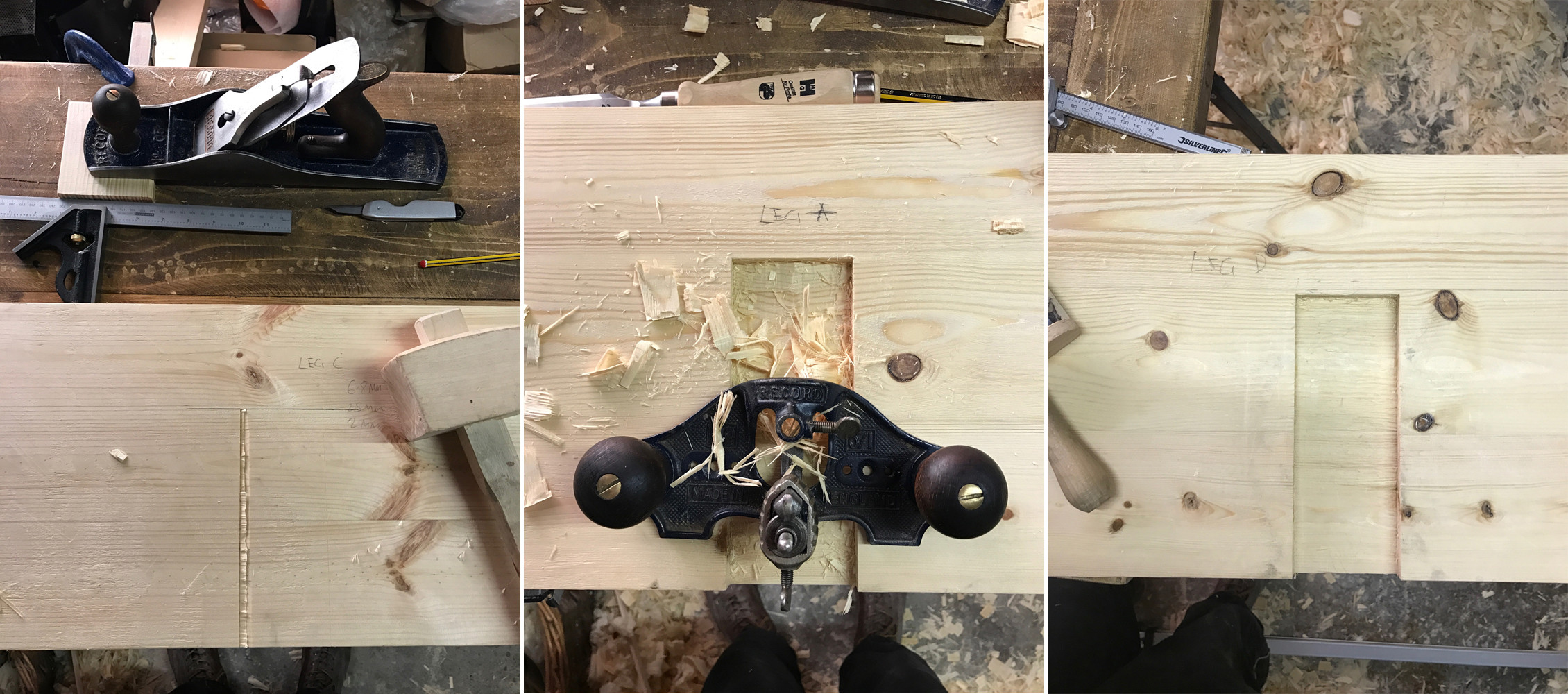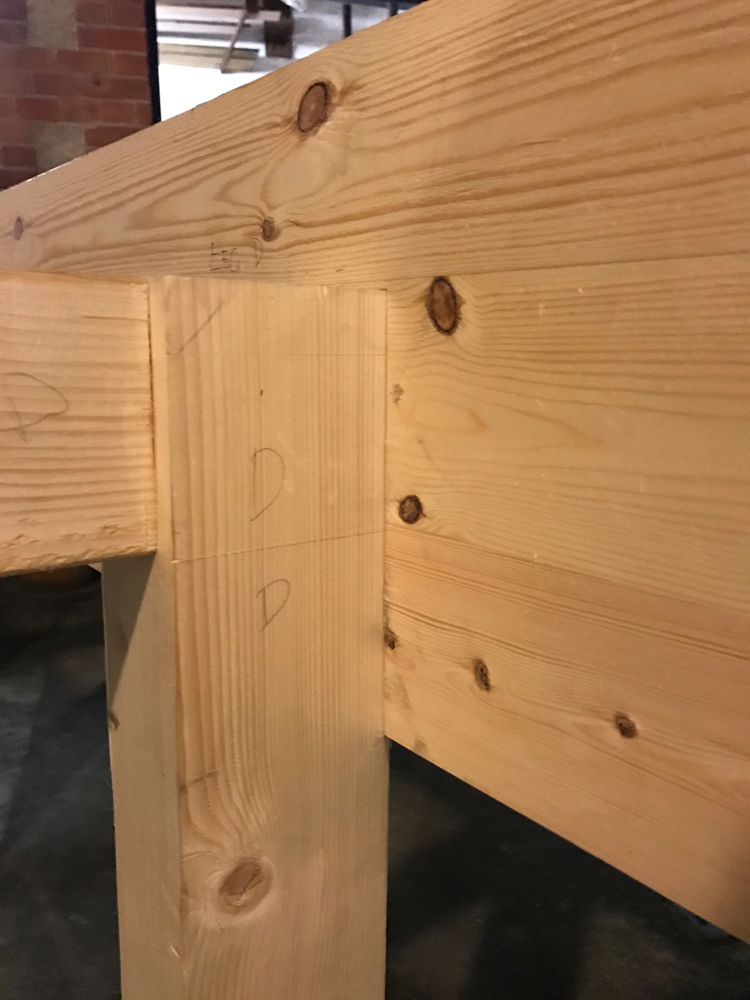El Barto
👍
More progress today. The dadoes have now been cut to house the leg frames and it's beginning to take shape. The legs fit snugly into their housings which I'm pretty pleased with, except one that is just a fraction looser than I'd like. Not really a big deal. The dadoes are mostly clean cut which I'm also happy with - couple of small bruises and one knot which made a bit of a mess but for the most part all good. I offset one of them by a millimetre to compensate for the slightly narrower leg frame.
The surfaces need to be planed smooth but that can wait.

The housing dado on the right looks out of shape - it's just the camera angle. :roll: :twisted:


That's about it for the next few days as I'm going to be away from home, but I'm happy to have got to this point knowing I can come back and the majority is done.
The surfaces need to be planed smooth but that can wait.

The housing dado on the right looks out of shape - it's just the camera angle. :roll: :twisted:


That's about it for the next few days as I'm going to be away from home, but I'm happy to have got to this point knowing I can come back and the majority is done.







































